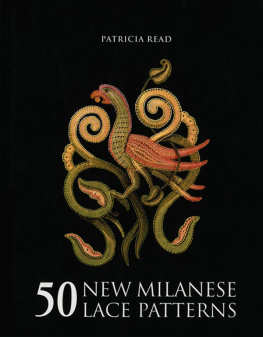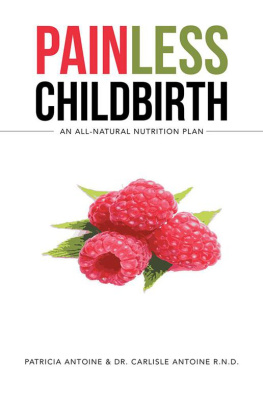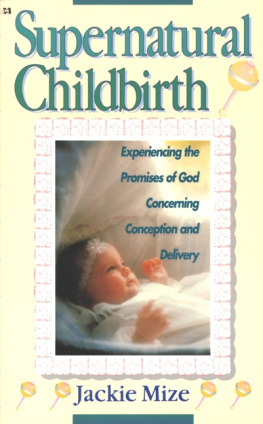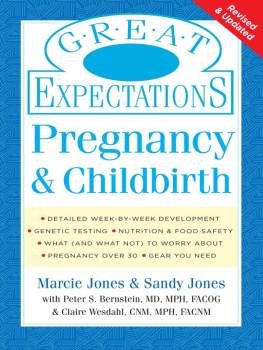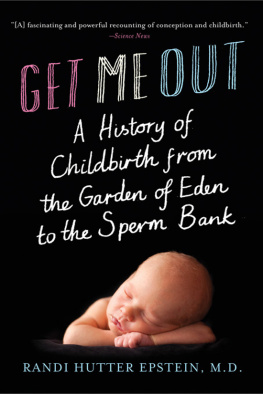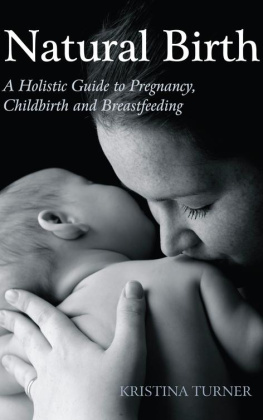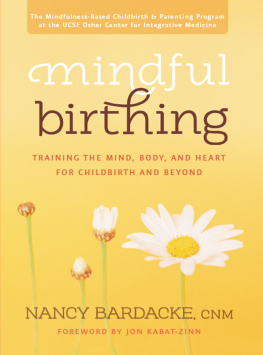Childbirth Without Fear
GRANTLY DICK-READ
Born in Britain in 1890, Grantly Dick-Read studied at Cambridge and at the London Hospital. He soon realised that there was something inherently wrong with the traditional methods of delivering babies, with their emphasis on intervention and the extensive use of anaesthetics.
The publication of Childbirth without Fear caused widespread controversy, but, encouraged by many women who had given birth using the Dick-Read method, Grantly Dick-Read dedicated his life to promoting natural childbirth. He died in 1959.
INA MAY GASKIN
Ina May Gaskin has been a midwife for more than forty years at The Farm Midwifery Center in Summertown, Tennessee. She is the only midwife after whom an obstetric manoevre has been named (Gaskin manoevre). She is the best-selling author of Spiritual Midwifery, Ina Mays Guide to Childbirth, Ina Mays Guide to Breastfeeding and Birth Matters.
PUBLISHERS INTRODUCTION
This Pinter & Martin edition of Childbirth without Fear is true to the fourth, and last, edition Grantly Dick-Read completed in June 1959, the month of his death.
Grantly Dick-Read first published his revolutionary views on childbirth in 1933 as Natural Childbirth. He later expanded this work and in 1942, under the title Revelations of Childbirth, it became the first version of the book you now have before you.
Since the authors death, heavily edited versions of Childbirth without Fear have been produced. We hope this second Pinter & Martin edition will introduce a new generation of parents and health professionals to his work.
THE COVER PHOTOGRAPHS
The front and back cover photographs by Lynsey Stone are of the unassisted home birth of Phoenix, born April 14th 2009, to parents Gina and Cody Phillips. Gina: 8.23am His head delivers My body tingles with joy. I begin to scream I LOVE YOU BABY! over and over again as his body delivers. I cant stop myself from saying it. Im so overjoyed. I feel like a lion roaring these words. I feel ferocious and strong. I feel beautiful and powerful. I feel completely conscious and primitive. He is born into mine and Codys eager hands and I bring him to me. There are no words the perfect birth!
Grantly Dick-Read
Childbirth Without Fear
The principles and practice of natural childbirth
Foreword by Ina May Gaskin

Childbirth without Fear
The Principles and Practice of Natural Childbirth
First published by Heinemann Medical Books 1942
Fourth edition first published by Heinemann Medical Books 1959
This second Pinter & Martin edition first published 2013
Copyright 1959, 2013 by The Estate of the late Grantly Dick-Read
Foreword 2013 Ina May Gaskin
The moral right of Grantly Dick-Read to be identified as the author of this work has been asserted in accordance with the Copyright, Designs and Patent Act of 1988
ISBN 978-1-78066-055-4
also available as ebook
British Library Cataloguing-in-Publication Data
A catalogue record for this book is available from the British Library
This book is sold subject to the condition that it shall not, by way of trade and otherwise, be lent, resold, hired out, or otherwise circulated without the publishers prior consent in any form or binding or cover other than that in which it is published and without a similar condition being imposed on the subsequent purchaser.
Set in Minion
Printed and bound in Great Britain by TJ International Ltd, Padstow, Cornwall
Pinter & Martin Ltd
6 Effra Parade
London SW2 1PS
www.pinterandmartin.com
Contents
Childbirth Without Fear
To the memory of
Joseph B. De Lee, AM, MD
Late Professor of Obstetrics and Gynaecology,
Emeritus, University of Chicago, USA
this book is dedicated
For his kind interest in my work and
for his personal friendliness and appreciation
I shall always be sincerely grateful
Grantly Dick-Read
Foreword
Ina May Gaskin
I had no idea when I first read Childbirth Without Fear at the tender age of sixteen that the book would set the course of my life to an extent that is only obvious to me now. I found the book in the public library in my hometown and began what became a lifelong study of birth. Birth was a fascinating and mysterious subject at that time in my sheltered life, and this was the only book I could find about it. The edition I read had no photos, but it prepared me for birth and, amazingly, it prepared me to be a midwife in so many ways that its hard to list them all.
Grantly Dick-Reads description of birth as a biological process, the functioning of which goes best when the labouring woman is calm and unafraid, made sense to me, because it matched all of the stories that I had overheard during the summer I spent at my aunt and uncles farm when I was nine. In case you dont already know this, family farmers talk about birth a lot. My aunt took care to school me on the principles of mammalian birth, principles that my cousins had learned at a much earlier age. Even though I never had a chance to be around a labouring animal or see any kind of birth or pictorial representation of birth in any species, I quickly learned that it is inexcusable behaviour to frighten or bother a labouring female. I also learned how easy it is to unintentionally cause complications in birth in this way.
Never having been exposed to frightening birth stories when I read Childbirth Without Fear (my mother had assured me that giving birth was something that women could do), it wasnt hard for me to accept Dick-Reads message that approaching birth with a positive attitude of trust in ones body and in nature would enhance the spiritual experience that birth was meant to be. He made birth seem an exciting adventure that lay ahead, one that a man might even wish he could experience himself. What could be more encouraging to a young woman than to read a book by a doctor who described birth in this way?
What I didnt know when I was expecting my first baby in the mid-1960s was that hospital birth practices in most parts of the United States (including the place where I lived) were radically different Had I read that chapter before my first pregnancy, it would have warned me about the treatment I would encounter in a typical US hospital. That chapter recorded Dick-Reads astonishment at the degree of ignorance of the physiology of birth in healthy women and the practice of deliberate injury to women (on the excuse that this avoided worse injury) that characterized mainstream obstetrics when he toured many US hospitals over three months in the late 1950s: It seemed there was no possibility of an emergency arising that could not be dealt with immediately, he wrote, but there was no provision for the absence of emergency or abnormality. I was told it did not happen!
As a gynaecologist, Dick-Read knew that many women who had had episiotomies suffered from gynaecological problems caused by the episiotomy itself, and that an episiotomy in a healthy woman often destroyed her enjoyment of further sexual contact with her husband. Knowing from his own experience that 90 per cent of healthy women attended by a competent obstetrician or midwife could give birth without episiotomy or other trauma, he asked several US obstetricians why every womans perineum was deeply cut before the birth of the baby. Their answers amazed him. Episiotomies not only prevented tears, he was told, but they kept the babys head from acting as a battering ram against the rigid perineum of the mother. In each hospital he visited, two-thirds to three-fourths of US babies were being pulled from their mothers bodies with forceps, and episiotomies were mandatory because student doctors were taught it was dangerous for a baby to be born without first cutting through the mothers perineal muscles.






